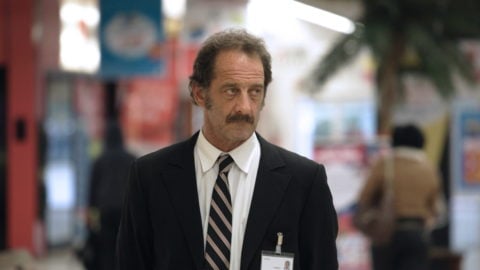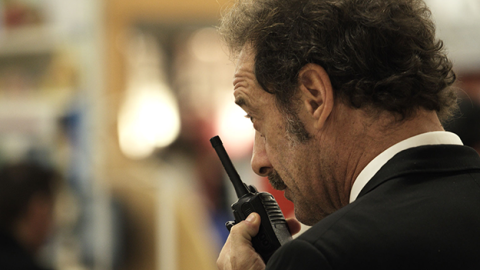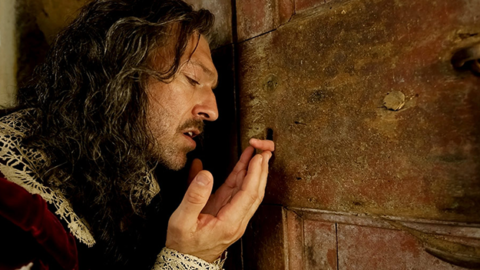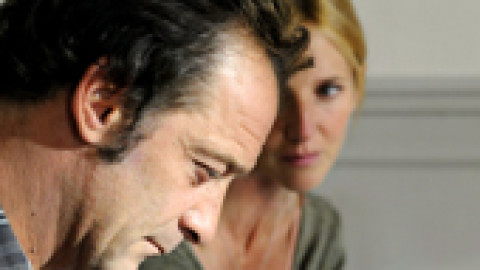Venice Interview: Stéphane Brizé
After portraying the touch-and-go life of a working-class father in last year’s Cannes award winner The Measure of a Man, Stéphane Brizé presented his newest film in competition at the 73rd Venice Film Festival. A Woman’s Life (Une Vie) adapts the Guy de Maupassant novel that spans the adult life of aristocrat Jeanne Le Perthuis des Vauds (played by Judith Chemla) from adolescence through unhappy marriage. The premise of a costume drama suggests a complete change of direction for the French writer-director, but only at first glance.
As if recalling the original French title of The Measure of a Man—“the law of market”—Brizé again explores the laws of an inherently exploitative social system in A Woman’s Life. This time, however, it is the 19th-century economics of marriage and family instead of the neoliberal labor market. As Jeanne’s married life falls far short of the ideals she admires as a young girl, Brizé reaffirms that the exploited cannot help but play their own part in the exploitation, influenced and pressured by the ideologies of work ethics or romantic and maternal love, with their respective moral imperatives.
Film Comment spoke with Brizé in Venice about the challenges of adapting Maupassant’s novel for film, making political cinema, and shooting his film in the intimate square of 4:3.
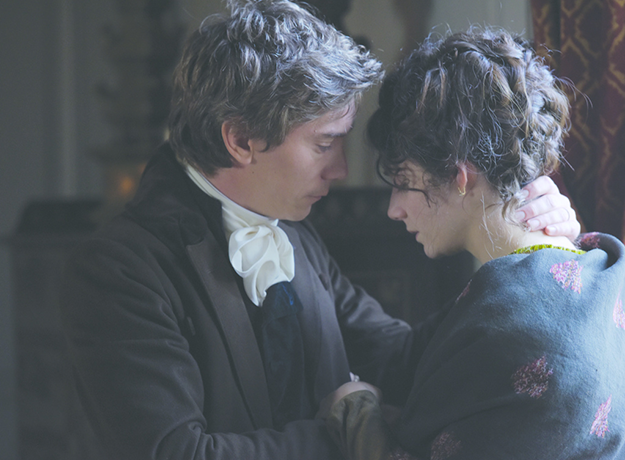
What drew you to the Maupassant novel?
I was fascinated by discovering the vision of the world of someone who has very high views of mankind. It is absolutely beautiful to find a woman like Jeanne, whose idea of mankind and the world is probably very naive. She is unable to accept and mourn the loss of the paradise that you live in as a child, and to recognize that when entering adulthood, you simply have to change your views and accept things you did not have to before. To me, it seemed very touching, because growing up, I experienced the same thing—how difficult it is to change your views and to accept the new reality. But I was also overwhelmed by the fact that the pure beauty of this attitude is very often inseparable from its tragic consequences. It is the tragedy of beauty.
In addition to being based on Maupassant’s character, was your version of Jeanne inspired by Madame Bovary?
Yes, that is true—Maupassant and Flaubert are very close. Flaubert was the literary father of Maupassant and he accompanied me in the writing of the movie as well. Frankly, Madame Bovary annoys me quite a bit, but she is nevertheless a beautiful figure with a very romantic idea of love.
The same romantic idea of love is associated with the film genre of costume drama itself. It seemed to me that the realism of your film, by contrast, deconstructs the genre conventions that disregard the historical realities of marriage and family, especially as lived by women.
That is true—and in fact, I had to struggle to get rid of what you define as the genre conventions of the costume drama. Inevitably, like all of us, I grew up with the ghost of the films that were made in the past; I was fed these films that are, in fact, schools of clichés. The number of them has grown with every new period film that is made. I knew I must not fall into the trap of all of the clichés and all of the inaccuracies that are often present in period dramas, but of course, I was not alive in the 19th century, so I had no idea what those lives were actually like. I had to concede that I had my own vision, that is necessarily a very subjective one, my personal projection of that historical reality, that I would combine with wanting to make a realistic film.
You had no idea what I had to fight on the set. Everyone was always trying to give me something very tidy and neat. Every day, the actors would appear with perfect hair-dos and perfectly ironed costumes even though the scene was taking place, for example, at 4 p.m., and that made me really mad—furious, even! I mean, these people worked with the earth, waking up at 5 in the morning to work in the garden, sweat all day and get dirty—they could never look like that. The crew argued they would get dirty during the shooting, but when I say “Action,” I want the characters to show us what they lived before the moment that we see them on the screen. So even though I was making a period piece, I was very happy to have a sense of proximity and contact.
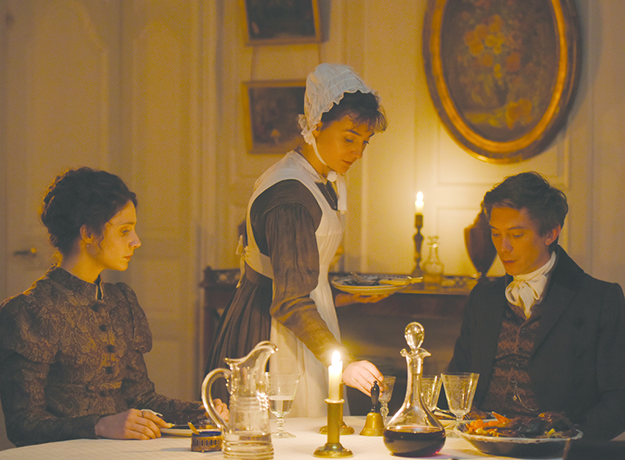
A Woman’s Life looks very different from your previous film, The Measure of a Man, but only at first glance. Perhaps the thematic connection between the two films is well illustrated by what Engels said of the relationship between a man and a woman and how it mirrors the relationship between the bourgeoisie and the proletariat.
I agree with you. It interests me that you see the parallel between the two characters and the connection between the two films. What they have in common are their high views of mankind. Jeanne believes men are basically good—and it is this belief of hers that is at the root of her drama, because she can’t see the lies around her. And at the end of The Measure of a Man, Thierry says he is worth much more than the constraints they are trying to impose on him, even though he commits a social suicide by saying it. So the paradox of these two human beings, these two characters, is that where the sublime is present, the tragedy is present too. But also, I think I am becoming an increasingly strong communist. We need to—we are obliged to become that.
But by making explicitly political films, aren’t you in danger of coming across as didactic?
You can be didactic even if you’re not political. I take care not to explain too much, not to show too much, because I think that the viewers must fill in the gaps themselves—there need to be gaps in the film, so that everyone can interpret it their own way. One of the reasons why I shot the film in the 4:3 format is that I tried to search for an angle that doesn’t reveal everything. The blank spaces are ready for the spectator to project their own story on the screen, and the emotion they feel stems from their personal lives—that way, the spectator has a certain autonomy.
Were the visuals and the editing influenced by the style of the novel in any way?
I felt comfortable shooting in this format because it’s very particular. It’s square, and together with the narrow framing, there is a sense of her being confined, of literally being put in a box. On the other hand, I also needed to deconstruct the storytelling of the novel, not so much because I want to deconstruct the novel’s romanticism or anything like that, but because I was looking for a dramatic answer to the issue of the passing of time. In his novel, Maupassant has 270 pages to tell the story—a reader would spend 20 hours reading it, as opposed to the two hours of the running time of the film. The story is constructed in a very linear way, which was impossible to translate to the medium of the film in this case. When you first read the novel, you say, “Oh, no problem, the screenplay is already there,” because it’s beautifully written—but then, you realize you have to tackle it in a wholly different way, with the question of how to tell the story that spans over 20 years in two hours’ time, and how to do it naturally.
One of the solutions that I found was ellipsis. In the time between two shots, the time you can’t see in the film, three hours or three years could have passed. It’s a very powerful cinematic tool. But there was another reason I used it: despite having the impression that our present life is a continuous series of events, which is true for the passing of the time in physical sense, in fact, our mental present is the sum of everything we have experienced in the past. Although we have the impression of living in the present, we do nothing but pile up our experience of life, layer upon layer.
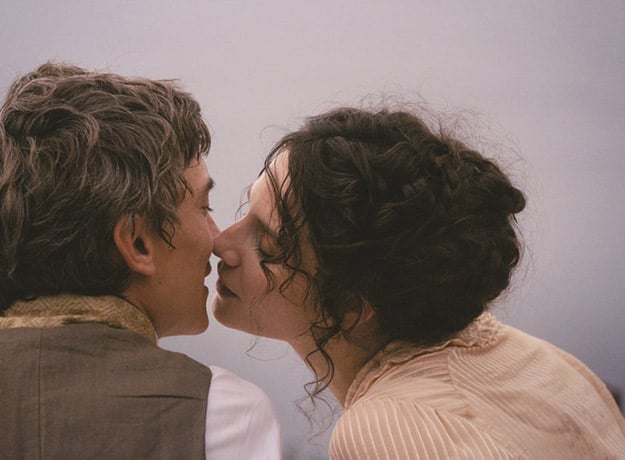
The subtitles revealed the international title of the film to be A Woman’s Life as opposed to Une Vie in the original French (“A Life”). Doesn’t making it gendered have a somewhat reductive effect on the meaning of the story?
We did research to find out the most common title of the translations of the novel into the English language, and A Woman’s Life was the title under which the Anglo-Saxon world knew the novel best, so we had to keep to it. Still, I would prefer to have an international title of just A Life, and I do hope that in other countries where the film is released, the title will be a literal translation of Une Vie, the original title of Maupassant’s novel.
Are you working on a new project at the moment?
My new project is dormant. Why? I have been working constantly during these past four years and it has been very difficult. I have a hard time keeping up with the pace of my work, because when you do fiction, in my case at least, you have to absorb enough reality first. So, I have to have my fill of the world before I can tell you what my next project will be.
Tina Poglajen is a freelance film critic. She likes going to film festivals.



